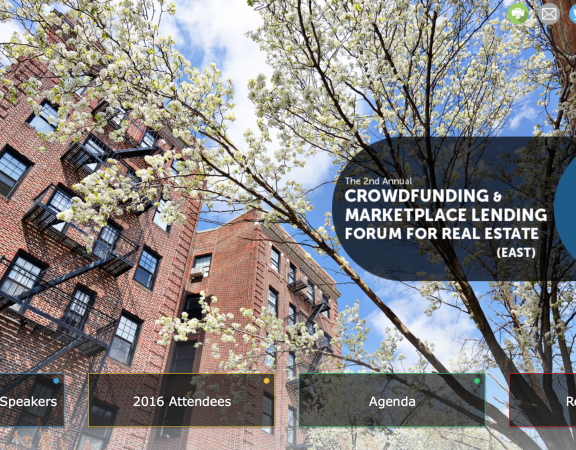Since the Credit Crisis first officially took hold back in the summer of 2007, a high percentage of people have seen firsthand the wide-range of value changes due to the highly fluctuating financial markets. In recent years, interest rates have reached record or near record all-time low levels. Yet, it has still been challenging for individuals and larger business entities to borrow funds from banks today, especially for real estate.
Historically, real estate has benefited from increasing inflation coupled with decreasing interest rates more than any other asset class as properties usually maintain appreciation rates at or above annual rates of government-reported inflation. When interest rates are lower, borrowers can usually qualify for larger mortgage loan amounts. Increasing loan qualification mortgage amounts then can lead to increasing home prices both regionally and nationally.
Falling 10-Year Treasuries & 30-Year Mortgages.
In recent times, the U.S. Prime Rate has hovered near 3.25%, the Federal Discount Rate at or near 0.75%, and the Fed Funds Rates reached 0.25%. Let’s compare those incredibly low rates with January 1981’s 21.5% U.S. Prime Rate levels and the double-digit 30-year mortgage rates. On a comparative basic, today’s ongoing record low rates are truly affordable and impressive.
30-year fixed mortgage rates are tied to the direction of 10-year Treasury yields. As 10-year bond prices swing downward; both 10-year Treasury yields and 30-year mortgage rates swing upward. Between the early 1980s and early 2015, the 10-Year Treasury Yields were almost 10 times higher back in the early ‘80s as compared with 2015.
Falling Treasuries
The massive interest rate pendulum swings over the past few decades have shifted capital sources more from banks to alternative funding options as private money lending options have become much cheaper and affordable with easier borrowing guidelines.
January 1, 1980 – 10.80%
January 1, 1981 – 12.57%
January 1, 1982 – 14.59%
January 1, 1983 – 10.46%
January 1, 1984 – 11.67%
January 1, 1985 – 11.38%
January 1, 1986 – 9.19%
January 1, 1987 – 7.08%
January 1, 1988 – 8.67%
January 1, 1989 – 9.09%
January 1, 1990 – 8.21%
January 1, 1991 – 8.09%
January 1, 1992 – 7.03%
January 1, 1993 – 6.60%
January 1, 1994 – 5.75%
January 1, 1995 – 7.78%
January 1, 1996 – 5.65%
January 1, 1997 – 6.58%
January 1, 1998 – 5.54%
January 1, 1999 – 4.72%
January 1, 2000 – 6.66%
January 1, 2001 – 5.16%
January 1, 2002 – 5.04%
January 1, 2003 – 4.05%
January 1, 2004 – 4.15%
January 1, 2005 – 4.22%
January 1, 2006 – 4.42%
January 1, 2007 – 4.76%
January 1, 2008 – 3.74%
January 1, 2009 – 2.52%
January 1, 2010 – 3.73%
January 1, 2011 – 3.39%
January 1, 2012 – 1.97%
January 1, 2013 – 1.91%
January 1, 2014 – 2.86%
January 1, 2015 – 1.88%
The Risks with Banks and Stocks
The availability of capital sources has been the driving force in regard to the directions of a “boom” or “bust” real estate cycle. People generally need money to get into and out of a property. When access to third party mortgage funds has been cheaper and easier in the past, then real estate values usually rapidly increase. Conversely, tighter access to mortgage capital due to higher interest rates and more challenging mortgage underwriting guidelines can lead to falling or stagnant real estate values.
Over the past several years, interest rates have fallen to historic all-time lows. Yet, access to conventional bank capital for things like construction, business, and home mortgage loans has continued to remain very challenging for a high percentage of private and commercial borrowers. As a risk mitigation strategy, many of the largest U.S. and international banks have invested their funds into the derivatives markets (i.e., interest rate option derivatives by way of LIBOR and other indices) as opposed to making more loans available to their customers.
What is perceived as “safe” today and what is perceived as “risky” as it relates to investments? Back in the good old days, investments in U.S. bonds and bank savings accounts backed by the combination of the “full faith” of the U.S. Treasury, the FDIC (Federal Deposit Insurance Corporation), and / or the former FSLIC (Federal Savings and Loan Insurance Corporation) were considered the “safest” of them all. These savings accounts were somewhat akin to investing in banks’ safe deposit boxes with high annual returns.
When the U.S. Prime Rate reached 21.5% in December 1980 and numerous Savings and Loans nationwide were offering double-digit savings account returns backed by FSLIC, these Savings and Loan CD (Certificate of Deposit) investment options were hard to beat in the 1980s and parts of the 1990s. Subsequent to the implosion of the Savings and Loan industry, FSLIC collapsed and then was later taken over by the FDIC in the ‘90s. Investments with banks weren’t considered so “safe” after so many hundreds of large financial institutions went out of business beginning in the ‘80s and ‘90s, and investors began seeking new forms of investment options.
In the ‘80s and ‘90s, “alternative” investments like stocks for start-ups, foreclosures, or investing in packaged pools of mortgages seemed a bit “risky.” Once more investors saw the real investment opportunities with equities, the various stock market index levels began to rapidly increase. For example, the Dow Jones index level reached the jackpot-like number of 777 back in August 1982.
The Dow Jones numbers has skyrocketed to as high as 18,000+ in recent times in spite of reaching near 6,500 Dow Jones lows in March 2009. Now, is the stock market overvalued once again and seemingly quite risky? Interestingly, some of the wealthiest and most sophisticated individual and institutional investors are taking their stock profits, and rolling them back into real estate (properties and mortgages) as these investments now seem like tremendous bargains to them.
It was during the “Savings and Loan Crisis” that more Americans began to change their perceptions regarding the relative safety involving placing funds in U.S. bank accounts. As a result, more Americans began investing in real estate, purchasing mortgages or trust deeds, and stocks. Real estate and stock market values then began to shoot skyward with increased inflow of capital.
Because of this change in perception, the retail investment “pendulum” has moved significantly from “safe” bank investments to “riskier” alternative investment options. After the summer of 2007 and the official start of the “Credit Crisis,” there was an equilibrium point reached when more people believed that investing in potentially financially insolvent banks that offered zero to negative net returns after factoring in time, inflation, increasing bank fees, and taxes was the riskier investment option rather than finding alternative investments which offered truly positive net returns with fewer overall risks.
Financial Solution Swings: From Banks to platforms
“Private Money” or “Hard Money” type financing options and private lenders began to rapidly increase in numbers after the financial markets froze up in 2007, and even much more significantly in the fall of 2008. Parallel to the increase of private money options as conventional bank lending almost figuratively “slammed their brakes” on a wide variety of residential and commercial real estate properties and notes, mortgage, or trust deed investments, the “Social Media Revolution” increased at seemingly exponential growth rates with Facebook, LinkedIn, Twitter, and many others. Social Media and the rest of the internet made investment opportunities more visible, more accessible and easier to research at seemingly “hyper-speed” time ranges.
Out of necessity, a large number of individuals and businesses began seeking more alternative fund-raising and investment options for both their personal and business needs partly due to increasing frustration levels related to the lack of readily available capital from their once friendlier local, national, or international banks. Ironically, the lack of available capital from local banks then led to increasing business defaults and mortgage foreclosure rates. So, banks really created a “self-fulfilling downward spiraling prophecy” and future competition by inspiring investors to seek alternative investment options, including those provided by real estate crowdfunding platforms such as CrowdVenture.
Originally, crowdfunding was used to raise capital for charities, medical bills, and dream vacations. It later evolved into funding business ideas or expansions, and funding pooled funds for the acquisition of any number of millions of potential “Shadow Inventory” properties or performing or non-performing mortgages secured by residential or commercial properties. Effectively, cplatforms for Real Estate eliminates the “middleman” (aka “banks” – they typically invest their depositors’ funds in properties and mortgages), and directly shares the profits with the investors instead of with the banks’ shareholders or board of directors.
Crowdfunding platforms for real estate first began focusing on individual “Fix and Flip” type residential homes across the USA a few years back. Funded capital amounts increased from thousands to millions and even billions nationally as the success of this industry flourished each year and attracted more investors. Crowdfunding platforms then began to purchase small to large multi-family apartment buildings, mini-storage properties, retail shopping centers, hotels and motels, and various other types of properties as more investors became aware of how easy, safe, and profitable it was to invest in distressed and non-distressed properties nationwide at less than their true market value.
Banks have been offering their customers literally negative, zero, or sub-1% rates of returns in recent years with the threat of “bank bail-ins” (insolvent banks may be able to grab their customers’ deposits in order to save the banks first) as well. Many of the largest banks in America and the rest of the world may currently have on and off- balance sheet investments in the derivatives markets which far exceed the combined market value of their entire parent financial company. Today, banks may seem the riskier place to have one’s cash compared to a diversified investment portfolio that can be built using real estate crowdfunding platforms.
Investors in crowdfunding platforms for value-based properties and packaged pools of mortgages will reap financial rewards related to targeted, quality real estate assets which offer investors low loan to value ranges with attractive collateral protection, significant equity cushions, and consistent monthly or annual returns. crowdfunding platforms focused on real estate opportunities may outperform most types of investment options both in the near term and long term.
In many cases, crowdfunding platforms may be investing funds in local regions close to their investors’ homes as opposed to the banks strategies of investing in complex derivatives investments in international jurisdictions. As such, crowdfunding platforms may be the modern-day equivalent of a local “Community Bank” which invests in the local region, and boosts the local economy just like banks used to do many years ago. Ironically, banks may later be asking crowdfunding platforms for loans after many of these banks lose future customers tired of receiving negative net returns from “local” banks which, conversely, are not investing locally.
As the investment pendulum continues to swing away from banks as the primary suppliers of diverse investment products, real estate crowdfunding platforms such as CrowdVenture will save investors much needed time by bringing them attractive real estate investment opportunities with the benefit of thorough vetting and underwriting processes. So when should investors start looking at these types of platforms as viable investment options? The right time is now. After all, time is money – for better or worse.
Matthew Sullivan
msullivan@crowdventure.com
June 14th, 2015






